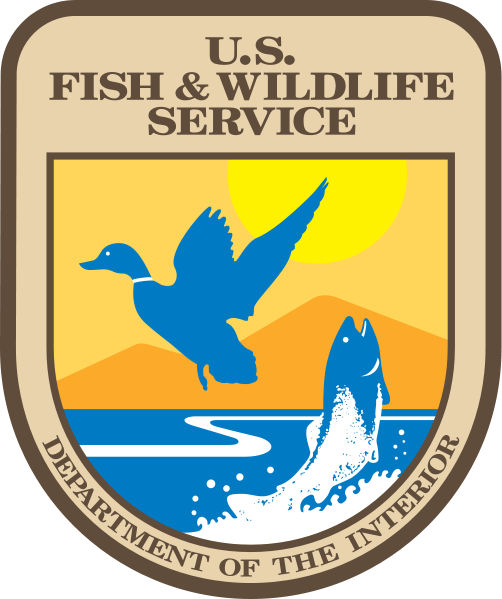01
Mar
Fish and Wildlife Service to Assess Harm from Glyphosate and Atrazine on Endangered Species
(Beyond Pesticides, March 1, 2016) Under the terms of an agreement reached lasted month, the U.S. Fish and Wildlife Service (FWS) will begin studying the effects of four commonly used herbicides on the health of 1,500 endangered species in the United States. Based on the terms of the settlement, the result of a series of lawsuits launched by the Center for Biological Diversity (CBD), FWS must develop a plan to mitigate the effects of glyphosate, atrazine, and its chemical cousins propazine and simazine, on any threatened or endangered species.
“ This agreement will result in long-overdue protections for our country’s most endangered species,” said Brett Hartl, endangered species policy director at CBD. “Once the Fish and Wildlife Service completes its analysis, and the public finally learns just how toxic and deadly these pesticides are to endangered species, we hope that the government will ultimately take most of these products off the shelf.”
This agreement will result in long-overdue protections for our country’s most endangered species,” said Brett Hartl, endangered species policy director at CBD. “Once the Fish and Wildlife Service completes its analysis, and the public finally learns just how toxic and deadly these pesticides are to endangered species, we hope that the government will ultimately take most of these products off the shelf.”
Under the Endangered Species Act (ESA), the Environmental Protection Agency (EPA) is required to consult with FWS and the National Marine Fisheries Service (NMFS) on the impacts of pesticides on endangered species when it registers a chemical under federal pesticide law (the Federal Insecticide Fungicide and Rodenticide Act, or FIFRA). EPA is required to ensure that the registration of a pesticide will not jeopardize the continued existence of a listed species by diminishing the species’ numbers and reproduction. However, the agency has consistently failed in this statutory obligation, as a report from the National Academy of Sciences’ Research Council (NRC) found in 2013.
CBD launched its initial lawsuit over the four pesticides in 2007, targeting the use of these chemicals in habitats around 11 endangered species in the San Francisco Bay area. A 2010 agreement established a schedule to review 75 different chemicals’ impact on those 11 listed species. In 2015, after 59 of the 75 chemicals had been reviewed, the agreement was amended, with EPA agreeing to complete a nationwide study on glyphosate, atrazine, propazine, and simazine, rather than a limited review of the last 16 pesticides on San Francisco Bay area species. EPA has until 2020 to complete that assessment. This latest settlement with FWS gives the agency until December 2022 to complete its assessment. CBD expects the review to lead to permanent restrictions on certain uses of these hazardous herbicides.
“With more than 300 million pounds of Roundup and 80 million pounds of atrazine being dumped on the landscape each year, it’s hard to even fathom the damage being done to endangered species, our environment and our own health,” said Mr. Hartl. “The analysis required under the Endangered Species Act is our best bet for forcing the EPA to stop acting as a rubber stamp for industry, and to finally make environmental protection the highest priority in decisions about these dangerous pesticides.”
Glyphosate and the three triazine herbicides under national review by FWS and EPA have evidenced significant adverse effects in wildlife. Beyond glyphosate’s recent classification as a carcinogen based on laboratory study by the World Health Organization, the chemical has been shown to harm earthworm populations, cause sub lethal damage to bees, drift and eliminate crucial habitat for monarch butterflies, and cause shape changes in amphibians. Groundbreaking data on atrazine from embattled researcher Tyrone Hayes, PhD, implicates the chemical as an endocrine (hormone) disruptor that mimics estrogen in the body. While Dr. Hayes’ research has focused on observing the herbicide’s impact on male frogs, which when exposed to atrazine develop ovaries and the ability to lay eggs, other researchers from across the country have replicated his results in other species, including fish, reptiles, birds, and mammals. (See Protecting Life: From Research to Regulation). Triazine herbicides, like atrazine, have been linked to widespread groundwater contamination, and were the subject of a $105 million lawsuit brought by community water systems against chemical’s manufacturer, Syngenta.
EPA has been the subject of numerous lawsuits for failing to consult with wildlife agencies in pesticide registrations. In 2014, the agency finalized a settlement in a lawsuit filed in 2002 to protect Pacific Northwest salmon populations from five toxic pesticides: diazinon, chlorpyrifos, malathion, carbaryl, and methomyl. In this case, a coalition of environmental groups sued EPA for failing to consult with NMFS. Years later, NMFS had not yet issued biological opinions for mitigation measures, and was sued again in 2007. Then, after NMFS issued its opinion, EPA failed to implement these protective measures, and another lawsuit was filed in 2010. Not until 2014 were common-sense buffer zones for pesticide applications near salmon habitat required by law. Another lawsuit launched last year challenges EPA’s approval of expanded uses of the herbicides 2,4-D and glyphosate on genetically engineered cropland without consulting FWS. CBD also sued EPA last year for not consulting with wildlife agencies regarding the recent registration of the fungicide benzovindiflupyr, which is highly toxic to fish and aquatic invertebrates.
For additional information on how pesticides impact wildlife and endangered species, as well as links to other lawsuits challenging EPA’s failure to consult with wildlife agencies before allowing toxic pesticide use, see Beyond Pesticides’ Wildlife program page.
All unattributed positions and opinions in this piece are those of Beyond Pesticides.
Source: Center for Biological Diversity











We must stop using Roundup and related chemicals. Even though California declared it a carcinogen, it will still be sold in stores! There are organic alternative and we must buy and support them.
March 1st, 2016 at 3:28 pm